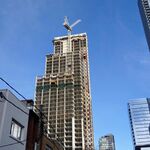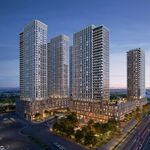TheStar - Aging transit line faces 3 choices
A study to be made public today has narrowed the choices for replacing the aging Scarborough Rapid Transit line to three options, costing anywhere from $350 million to $1.2 billion.
But one Scarborough councillor is already saying the recommendations don't go far enough.
Consultant Richard Soberman's study has rejected what was touted at one point as the cheapest — and probably least popular — option.
That would have replaced the SRT with a buses-only expressway, but the study concluded buses simply couldn't handle enough passengers.
Soberman's conclusions will be presented this evening at a public meeting at Scarborough Civic Centre, but details have been given to TTC commissioners and Scarborough councillors Glenn De Baeremaeker and Brian Ashton.
The SRT — which is now so crowded that Toronto Transit Commission routes actually divert passengers from it — is due to reach the end of its expected life by 2015.
According to De Baeremaeker and Ashton, Soberman's analysis boils the choices down to three:
- For $350 million, the TTC could replace existing SRT cars with larger, newer ones. Existing stations would have to be expanded to handle the longer trains, but except for reshaping one curve, the existing track would remain. In theory, the whole job would take eight to 15 months.
The new cars could move about 10 per cent more riders than the existing SRT, which moves about 4,100 passengers an hour in one direction at peak periods.
- For $490 million, the TTC could construct a "light rail transit" line or LRT on the existing SRT route. The LRT cars are essentially the same as Toronto streetcars.
On a dedicated LRT line they could be assembled into trains of three or four.
It would take about three years; the biggest job would be raising the height of the tunnels the line runs through to accommodate the taller LRT cars.
Capacity is about double the existing SRT.
Because it's a conventional streetcar, the LRT could connect directly with a network of streetcars running along city streets.
- For $1.2 billion, the TTC could tunnel a new subway. It would have to follow a different route to Scarborough Town Centre than the SRT, because subways can't turn the same tight corners.
A subway carries by far the most passengers — seven or eight times more than the SRT. Extending the subway also means passengers don't have to climb three sets of stairs or escalators to get to the SRT.
But a subway takes the longest to build, about nine years from the decision date.
In addition, a subway doesn't stop as often as do light rail vehicles. A subway would stop only once between Kennedy station and the Scarborough Town Centre, at a new Lawrence station.
Soberman wasn't asked to study how to pay for the new service.
The study doesn't contemplate extending service beyond the current end of the SRT at McCowan station, just east of Scarborough Town Centre.
That irks De Baeremaeker, who wants the subway extended into northeastern Scarborough, and ultimately looped with an extended Sheppard subway line.
"I'm going to be there Monday night pushing the subway right out to Malvern," he said.
The TTC will have a chance to make a decision that will benefit riders for the next century if it thinks big enough, he said.
Ashton struck a more cautious note. One way of looking at Soberman's analysis, he said, would be to pick one of the less costly options.
Scarborough councillors could then say: "OK, we're prepared to accept we don't want a subway that would cost $1.2 billion. We're prepared to take an option that costs $350 million, but you owe us the difference in other improved transit within Scarborough."
Source:
www.thestar.com/NASApp/cs...8332188492




